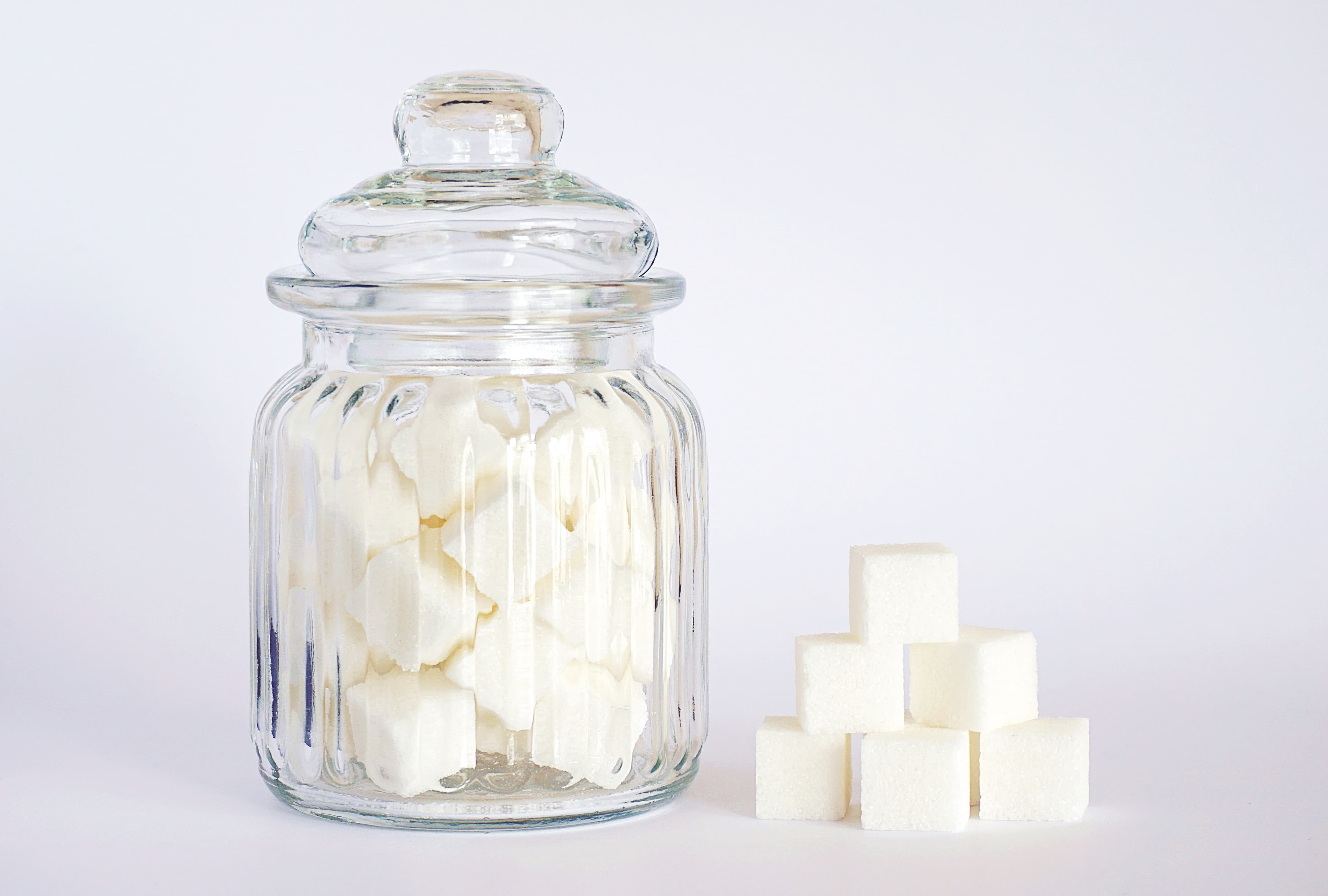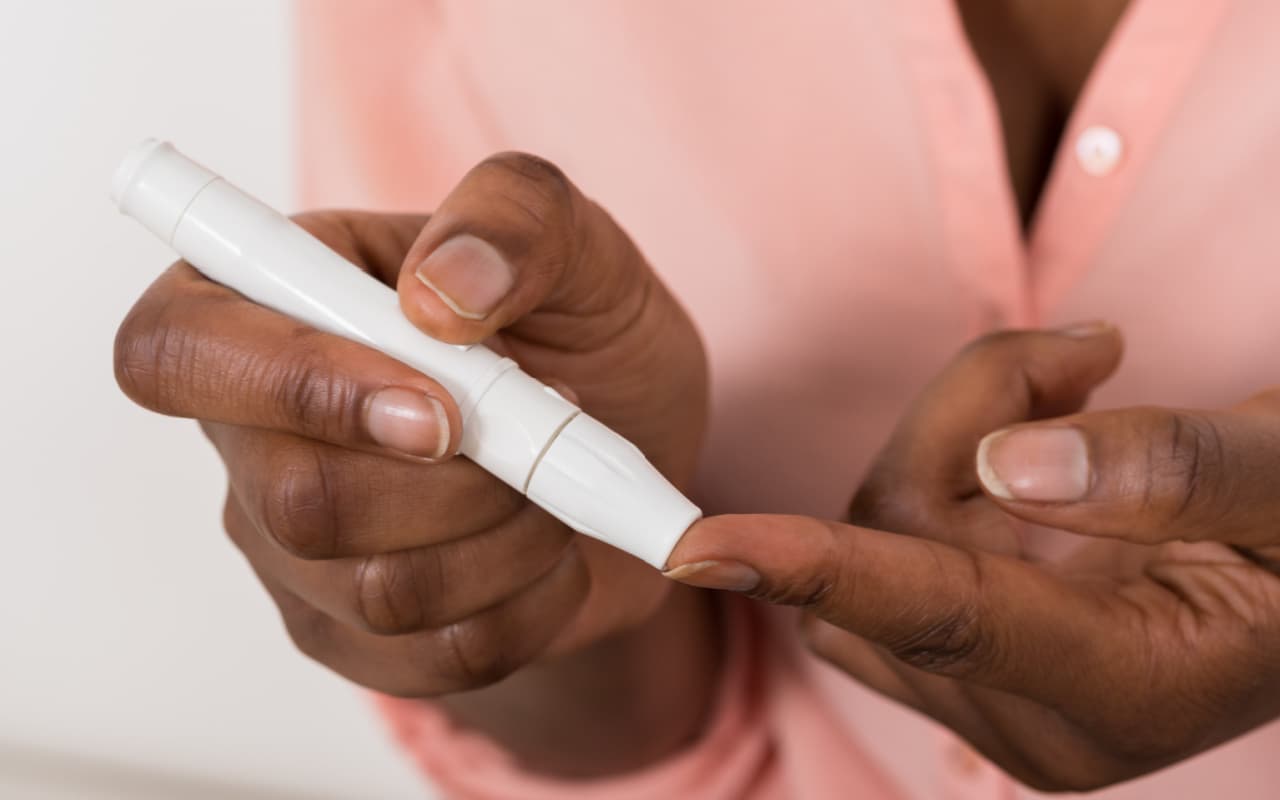Sugary food and drinks are everywhere you turn. Even things that aren’t classified as ‘sweet’, like ketchup, spaghetti sauce, and prepacked soup, are loaded with added sugar.
Most of us know that sugar isn’t good for us, yet a recent survey found that more than 82% of Americans eat more than the recommended 10% of calories from sugar per day.
If you or your loved one have prediabetes, diabetes, or another chronic health condition, reducing your sugar intake is one of the best things you can do to prevent complications and improve your quality of life. But eliminating sugar cravings isn’t easy.
Sugar is addictive. When you eat it, your brain releases dopamine –– a feel-good chemical. The more sugar you eat, the more likely you are to have cravings throughout the day. Thankfully, there are steps you can take to reduce sugar cravings and improve your diet.
What You’ll Need:
You don’t need any special equipment to curb sugar cravings. The key to success is better decision-making.
When preparing snacks or meals, think about how much sugar you’re about to consume and if there are any potential substitutes. Likewise, when you go grocery shopping, stay on the perimeter and avoid the middle aisles where sugary snacks abound.
If you’re struggling to make changes on your own, partner with a registered dietitian or a certified nutritionist. These professionals can provide personalized advice based on your health, lifestyle, and preferences.
Steps to Reduce Sugar Cravings
Step 1: Visit Your Doctor or a Registered Dietitian
Before you can reduce sugar cravings, you need to identify the underlying cause. Though we all experience sugar cravings, if these feelings become constant, it could point to prediabetes or diabetes.
“Sugar cravings can arise from a variety of factors, such as dips in blood sugar, nutritional deficiencies, and emotional or habitual needs,” said Dr. Alex Stone, DPT, CSCS, a doctor of physical therapy and strength and conditioning specialist. “Imagine your body as a car; the sugar is like quick-burning fuel –– it provides an immediate surge of energy but dwindles rapidly, leading to the so-called “crash” and inevitably, the need for a refill (or in this case, a sugar crave).”
A qualified healthcare provider can complete an exam and order blood work. They can then use that information to create a nutrition plan that helps you feel your best.
Step 2: Stabilize Your Blood Sugar
Fluctuating blood sugar is one of the most common causes of sugar cravings. If you regularly desire sweets, like candy or cake, it may be time to reevaluate your diet.
“Try eating balanced meals and snacks throughout the day that combine complex carbohydrates, protein, and healthy fats,” Dr. Stone explains. “For example, pair an apple with a handful of nuts or a piece of wheat toast with avocado and turkey slices instead of the usual pastries or soda.”
By focusing on balanced nutrition, you can prevent blood sugar dips and provide your brain and body the fuel you need to thrive.
Step 3: Eat Whole Foods
A whole-food diet is a nutrition plan that encourages you to eat fruits, vegetables, whole grains, lean proteins, legumes, healthy fats (like avocado), nuts, and seeds. In the simplest terms, “whole foods” are foods that aren’t processed. They’re packed with vitamins, minerals, and nutrients that you won’t find in a box or a bag.
“Regular meals and snacks with a balance of protein, healthy fats, and complex carbohydrates can help keep your blood sugar stable and prevent sugar cravings,” said Paul Bailey, a certified nutrition coach based in the United Kingdom.
Step 4: Stay Hydrated
Do you tend to have sugar cravings at certain times of the day? If so, you might be dehydrated.
“Sometimes, our bodies confuse thirst for hunger,” Bailey says. “Staying hydrated can help reduce cravings.”
Drinking at least eight, eight-ounce glasses of water per day is a good place to start, but it can get boring. To mix things up, Bailey suggests drinking herbal tea, fruit-infused water, or unsweetened almond or oat milk.
Step 5: Replace Dessert with Healthier Foods
If you have a sweet tooth, reaching for a soda or candy bar might be second nature. But if you keep doing the same things, you’ll stay stuck in the vicious cycle of sugar rush, crash, exhaustion, repeat.
It can be very hard to break out of this pattern, but it isn’t impossible.
“The next time a sugar craving hits, reach for fruit,” Bailey says. “The natural sugars, accompanied by fiber, ensure a slower release of glucose (sugar) into your bloodstream.”
If chocolate is your guilty pleasure, there’s good news! Dark chocolate that has a high percentage of cocoa (70% or above) isn’t as sugary as milk chocolate. As a result, it can be “a satisfying alternative for candy bars,” Bailey explains.
Step 6: Make Exercise Part of Your Routine
Regular exercise strengthens your heart, supports your bones and muscles, and even improves your brain health. But did you know that it can also reduce sugar cravings? It’s true, and you don’t have to overexert yourself either.
One study, conducted by researchers at the University of Innsbruck in Austria, found that a brisk 15-minute walk temporarily reduced “cravings for high-calorie, sugary snacks.”
Scientists aren’t sure why exercise helps, but it’s thought that the cognitive stimulation that it provides interferes with the thoughts that cause us to crave certain foods.
During the study, half of the participants were asked to walk briskly for 15 minutes, and the other half were asked to sit still for 15 minutes without doing anything. Those who exercised “reported significantly lower cravings for sweets mid-way through the experiment than the participants who didn’t.”
Not only do these results suggest that exercise is beneficial to sugar cravings. It confirms that you don’t need to be a professional athlete to benefit. Simply walking on a treadmill or going for a bike ride around your neighborhood may be enough to keep your sweet tooth at bay.
Step 7: Get Your Stress Under Control
Do you often feel stressed out? This too increases your risk of sugar cravings. Scientists have found that when under duress, the brain requires 12% more energy. And, the best way to get that energy is through carbohydrates.
Eating a sweet treat can provide some relief and reduce tension, but you're bound to crash afterward. Therefore, researchers recommend identifying the underlying cause of your stress and taking steps to manage it.
For example, if you struggle with feelings of unworthiness or shame, consider working with a mental health professional. Talk therapy, psychiatric medications, and healthy lifestyle changes can improve your outlook and curb sugar cravings.
Step 8: Work with a Nutrition Coach or a Registered Dietitian
The steps that we’ve already mentioned can help reduce sugar cravings, but it takes time and effort to implement them. If you’re struggling to make habits stick, consider partnering with a nutrition coach or a registered dietitian.
“Working with a nutrition coach or a registered dietitian can be a game-changer for those with prediabetes or diabetes,” Bailey says. “A coach provides personalized advice based on your lifestyle, preferences, and medical needs. They can help you navigate food choices, manage your diet, and build sustainable eating habits.”
Dr. Stone agrees, adding that “nutrition management is a cornerstone of diabetes control, and a dietitian can provide tailored advice based on your condition, lifestyle, and preferences, which can make the change not only effective but also sustainable.”
How to Reduce Sugar Cravings - Commonly Asked Questions
1) Do I have to eliminate sugar from my diet entirely?
You might have prediabetes or diabetes, but that doesn’t mean you have to eliminate sugar completely.
“Remember, the aim is to develop a healthier relationship with food,” Bailey explains. “Depriving yourself entirely can lead to a rebound sugar binge. Instead, aim for a balanced, varied diet with occasional treats.”
The story of Bailey’s client, Bill, illustrates this point perfectly. Small, gradual nutrition changes can result in lasting, positive health benefits!
2) Can taking a hot shower or bath reduce sugar cravings?
It’s possible! Some people who experience regular sugar cravings use hot baths or showers to avoid caving in. To try this on your own, set the water temperature to hot –– but not so hot that it burns your skin. Ideally, you want to create an environment similar to a sauna.
When you get an intense sugar craving, spend 5-10 minutes letting the hot water run over you. Take deep breaths and focus on something that gives you pleasure, like reading a book or spending time with friends.
By the time you’re finished rinsing off, you’ll feel better and be able to focus on other things besides sweets.
Though much of the evidence surrounding hot water and reduced sugar cravings is anecdotal, small studies support it. One experiment, done in the UK, found that men with diabetes who took warm baths regularly experienced an “overall reduction of fasting blood sugar and insulin levels.”
3) Can eating breakfast help keep my sugar levels in check?
Yes. Breakfast is called ‘the most important meal of the day’ for good reason. The nutrients that you eat after resting impact the way that the rest of your day goes.
Instead of relying on donuts and bagels, focus on protein-dense foods, like eggs, Greek yogurt, or a smoothie with protein powder. Protein makes you feel fuller and helps keep your blood sugar stable.
Need Help Selecting Low Sugar or Sugar-Free Snacks?
If you or your loved one have high blood sugar, it’s important to reduce your intake of sugary foods and beverages. This isn’t always easy, but we can help.
Our friendly Care Specialists can make product recommendations based on your goals and needs. Call (800) 696-CARE or send an email to support@carewell.com.



